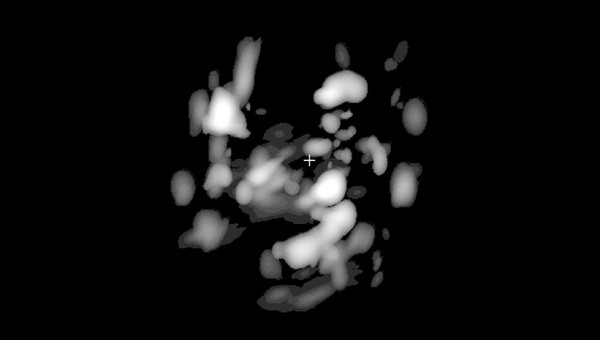Ural Federal University’s Astronomers Discover Disk Structure Around a Massive Protostar
An international team of scientists, including two astrophysicists from Ural Federal University, for the first time managed to see the structure of the accretion disk of a massive protostar (G358-MM1). The description and characteristics of the structure, which contains four spiral arms, astronomers published in the journal Nature Astronomy.
The information about a massive star’s disk structure (eight or more times more massive than the Sun) brings astronomers closer to the question of how massive stars are born. Today, this is unknown for any massive star (such objects are called “protostars” at the stage of formation). An understanding of the process is important because massive stars play a crucial role in the evolution of galaxies. Being a kind of factories, these stars produce many of the necessary building blocks for the universe’s life, modify the appearance and influence on galaxy evolution. They have a huge impact on the environment through feedback processes – powerful outflows, stellar winds, ionizing radiation, supernova explosions, generating high energy cosmic rays and the formation of entire clusters of other stars. The most massive stars become black holes after death.
“Until now, the structure of accretion disks of massive protostars was unknown to us,” says co-author of the study, Head specialist of the Kourovka Astronomical Observatory of the UrFU Andrey Sobolev. – Now we are getting closer to understanding this process. In fact, we managed to see and prove that the disk around a massive protostar has the structure of four spiral arms along which the substance falls on the star”.
Overall, the observations showed that the disk accretion is non-monotonic, with bright episodic bursts. Through spiral formations, the matter is transported to the inner area of the disk, from where it falls directly to the star.
“The G358-MM1 disk has four spiral arms, which beautifully wind around the protostar. The spiral arms help carry the disk’s matter to the inner radius of the system, and from there it can reach and nourish the protostar. Since the protostar G358-MM1 has already experienced growth spurts, the discovery of spiral instability helps to link disk instability with the process of forming high-mass stars. This connection was assumed in theoretical hypotheses many years ago, but has not yet been confirmed by observations”, – says Ross Burns, the Head of the study, researcher at the National Astronomical Observatory of Japan.
A team of astronomers used a new method of “excitation wave mapping”. The star’s burst of radiation scanned the matter of the disk, causing flashes of methanolic masers. It is extremely difficult to register such flashes associated with falling matter on the star. Firstly, compared to low-mass stars, there are relatively few massive protostars. Secondly, they are thousands of light years away from Earth. And thirdly, the tools for observing the outbursts such stars have appeared quite recently. Therefore, explains Andrei Sobolev, only five outbursts of such nature have been reliably confirmed to date. The first one was registered in 2015.
With the help of the international Maser Monitoring Organization (M2O), astronomers have managed to study the structure of the accretion disk of the massive protostar G358-MM1. Using telescopes, scientists observed masers – the amplifiers of radio emission through stimulated emission processes. In the vicinity around massive stars formation, some quantum transitions of molecules work as masers and made these objects to glow thousands, millions, or even trillions of times brighter at certain radio frequencies. Bright cosmic maser radiation can occur in both molecular clouds and the atmospheres of stars. According to Andrey Sobolev, it was extremely important to note that during maser observations, the scientists could determine not only the position of clumps of matter, but also the velocities of their movement.
As a reminder, a team of researchers led by Andrey Sobolev from Russia and Shi Chen from China received support from the Russian Foundation for Basic Research and the State Natural Science Foundation of China at the beginning of 2020 to study space masers in the formation areas of massive stars.Astronomers from 21 countries took part in the study. Twenty-four radio telescopes across the Earth were used to produce the images, which are published in the journal. The data were analyzed by teams from three data centers over three continents.

